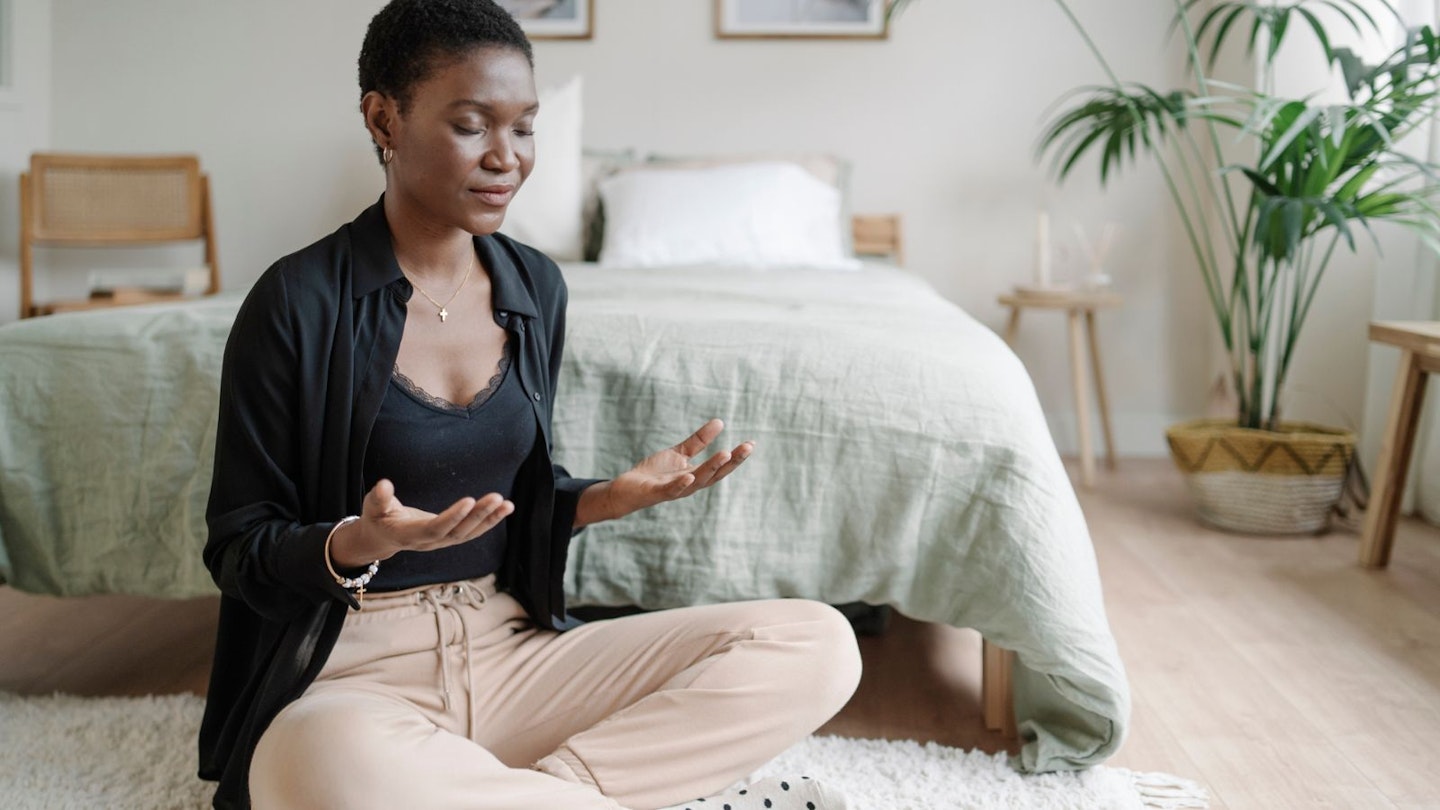With so much focus on wellbeing and mental health, it’s unlikely that you haven’t heard of meditation. Whether you know how to meditate or where to start with it is another matter. We say ‘it’, we should really say ‘them’ as there many types of meditation, all with benefits. Sleep meditations are extremely popular in these times when our lifestyles can be so busy that it’s hard to unwind at night and drift off to sleep.
In addition to helping encourage a restorative night’s slumber, the benefits of meditation include quietening mental chatter, relieving stress, anxiety, and depression.
Don’t know where to start with making meditation a regular practice? Fear not, in this article we’ll cover everything you need to know – by giving you the lowdown on meditation for beginners. And don’t worry, you don’t need to spend a fortune on getting yourself kitted out for your new interest. That said, you might want to ramp up the ambience factor with some incense or delve more deeply into the subject matter with one of these reads.
So - let’s get started…
What is meditation?
An excellent question. Let’s ask an expert. Charla Devereux, author of Your Meditation Journey, says: "The ultimate aim of meditation is to bring a person’s body and mind to their highest state of sensitivity and understanding of which they are capable of achieving," she says. "When conscientiously practised, it is a gateway to deep introspection and so it can allow for greater self-knowledge, strength and entry to spiritual realms."

Basic mindfulness meditation is when we learn how to pay attention to our breath, and by doing this we ground ourselves in the present. We plant ourselves in the here and now.
Reality is the here and now, whereas thought is involved with either past or future events.
Benefits of meditation
There are plenty: Reduced anxiety, panic attacks, increased self-compassion, and a greater appreciation for life.
Mindfulness is not a cure-all but for many people, it’s a major step towards good mental health self-care. There have been many studies into the benefits of meditation and research has shown that meditation can help us manage our emotions, boost our mood, and improve our concentration and memory. By reducing stress levels, meditation reduces anxiety.
Here’s the really great news. You don’t have to do LOADS of meditation to reap the benefits of it. As a meditation beginner, you might want to start small and build up your practice with time.
One study found that meditating for just 13 minutes daily enhanced attention and memory after eight weeks.
Charla Devereux is among those who shine a light on another benefit of meditation – enhanced spiritual growth.
"The ultimate aim of meditation is to bring a person’s body and mind to their highest state of sensitivity and understanding of which they are capable of achieving," she says. "When conscientiously practised it is a gateway to deep introspection and so it can allow for greater self-knowledge, strength and entry to spiritual realms."
What do I need?
The answer to this is… very little. A quiet space where you won’t be disturbed is desirable. Beyond that, it’s up to you. If you wish to make your meditation space even more special, of course, you can bring in scented candles, incense, or essential oils.
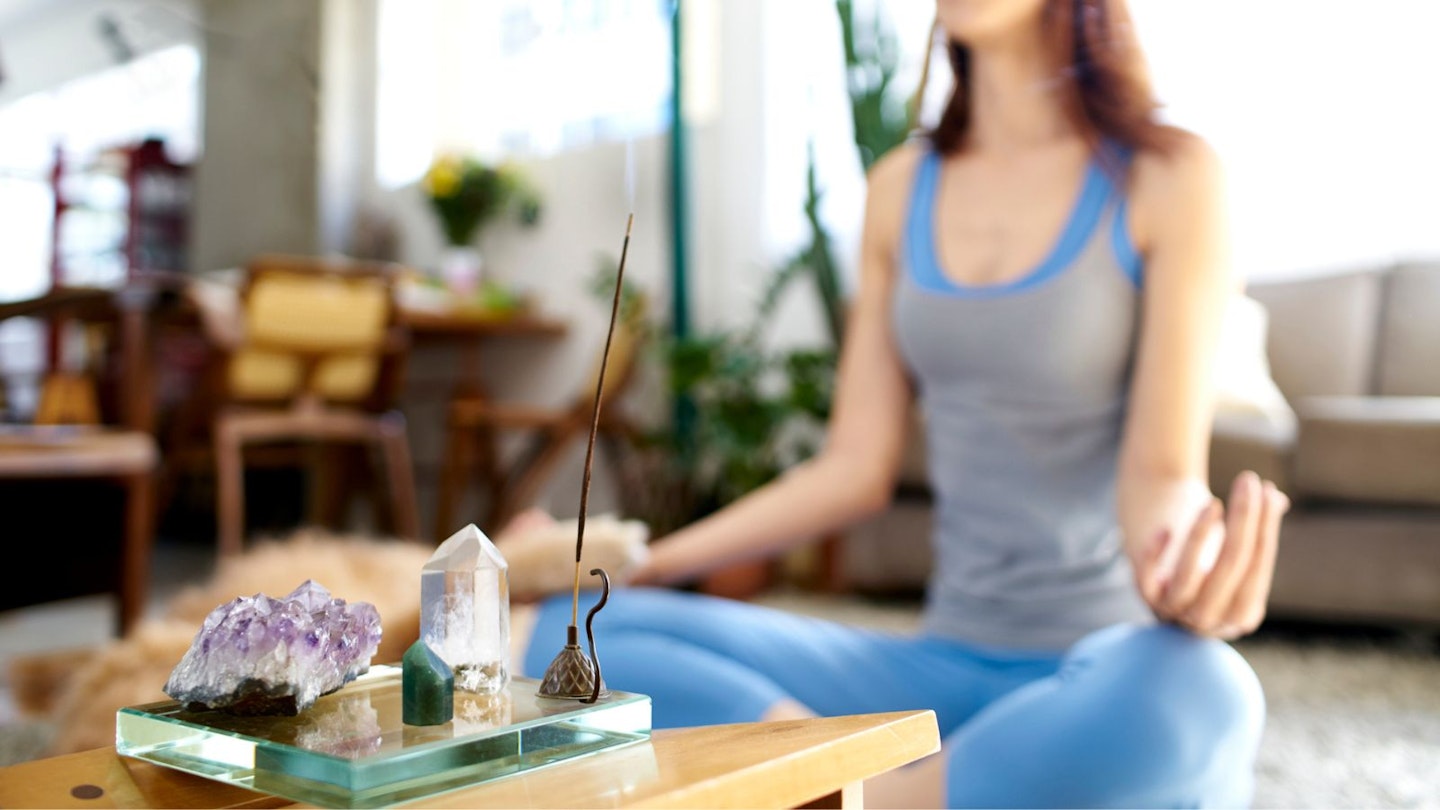
If you are using essential oils place several drops on a ball of cotton wool and hold it in your cupped hands. Simply inhale the fragrance as you shut your eyes. What smell you choose to work with depends on the atmosphere you decide to create. Rose essential oil is uplifting, lavender calms the mind and body, and frankincense heightens spiritual awareness.
Here are some simple tips on making your meditation space a sanctuary. Meditation cushions or meditation chairs can bring an extra layer of comfort to your meditation practice.
How to meditate
1) Take a seat
Find a place to sit that feels calm and quiet to you.
2) Set a time limit
If you’re just beginning, it can help to choose a short time, such as five or 10 minutes.
3) Notice your body
You can sit in a chair with your feet on the floor, you can sit loosely cross-legged, you can kneel—all are fine. Just make sure you are stable and in a position that you can stay in for a while.
4) Feel your breath
Follow the sensation of your breath as it goes in and as it goes out.
5) Notice when your mind has wandered
Inevitably, your attention will leave the breath and wander to other places. When you get around to noticing that your mind has wandered—in a few seconds, a minute, five minutes—simply return your attention to the breath.
6) Be kind to your wandering mind
Don’t judge yourself or obsess over the content of the thoughts you find yourself lost in. Just come back.
7) Close with kindness
When you’re ready, gently lift your gaze (if your eyes are closed, open them). Take a moment and notice any sounds in the environment. Notice how your body feels right now. Notice your thoughts and emotions.
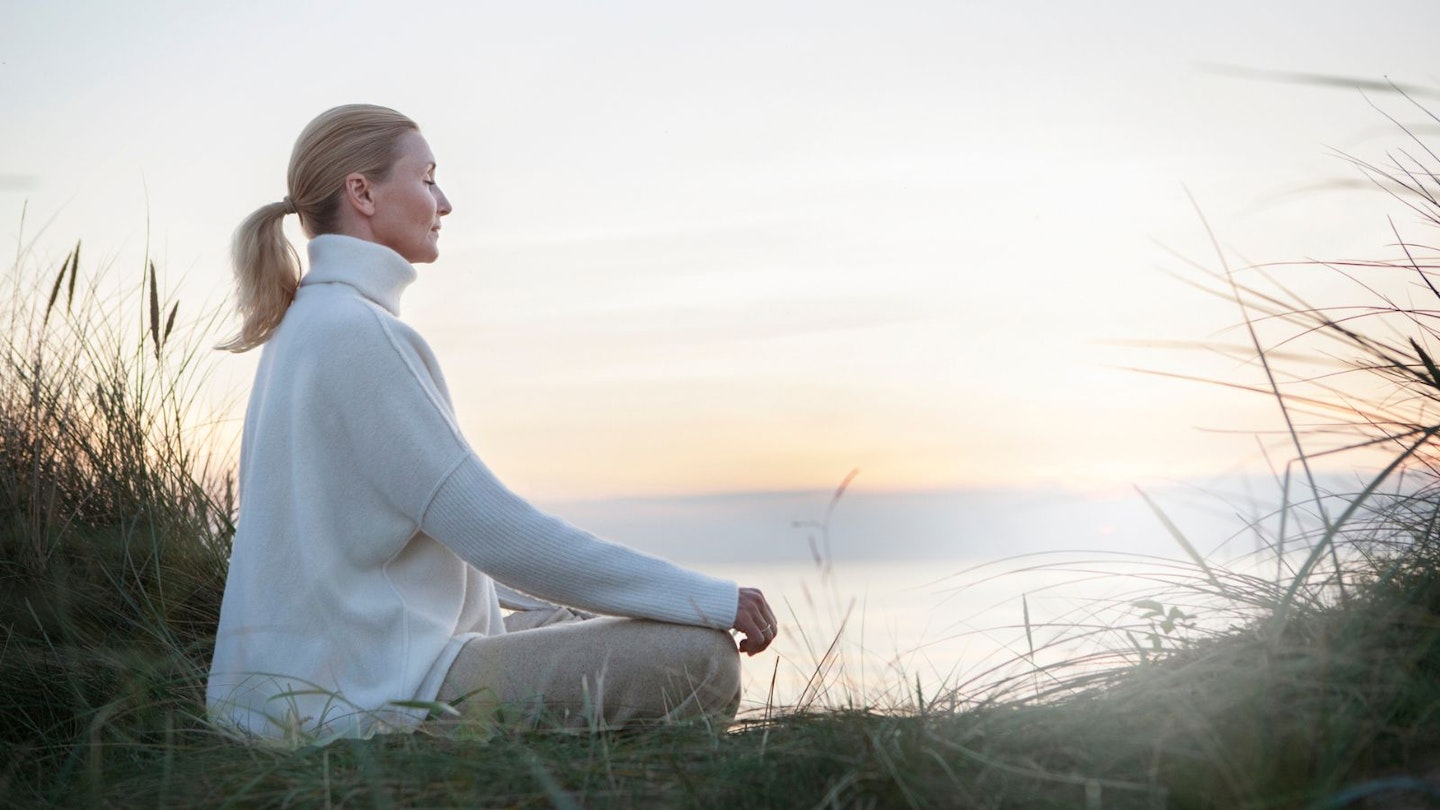
That’s it! That’s the practice. You focus your attention, your mind wanders, you bring it back, and you try to do it as kindly as possible (as many times as you need to).
A basic meditation for beginners
The first thing to clarify: What we’re doing here is aiming for mindfulness, not clearing our minds of all thoughts.
Get comfortable and prepare to sit still for a few minutes. After you stop reading this, you’re going to simply focus on your own natural inhaling and exhaling of breath.
Focus on your breath. Where do you feel your breath most? In your belly? In your nose? Try to keep your attention on your inhale and exhale.
Follow your breath for two minutes. Take a deep inhale, expanding your belly, and then exhale slowly, elongating the out-breath as your belly contracts.
Mountains visualisation to connect to Spirit
This five-step practice is simple enough for meditation beginners.
- Sitting quietly, eyes closed. Imagine you are climbing a snowy mountain towards the peak.
- Visualise your climbing boots firmly going up a steep, rocky slope through heavy white clouds.
- As you climb sense your mind ascending higher towards increasingly expansive states of consciousness that connect you directly to Spirit.
- Emerge through the clouds into a crystal-clear white light on the peak. Observe what thoughts and images pop into your mind. Then when you are ready, start your descent back to the base of the mountain.
- When you are ready, open your eyes and come back to the room.
FAQs
How much should I meditate?
The key is to commit to sit every day, even if it’s just for five minutes. If you love a bit of science, here’s something for you. Neuroscientist Amishi Jha discovered that 12 minutes of meditation, five days a week can protect and strengthen your ability to pay attention.
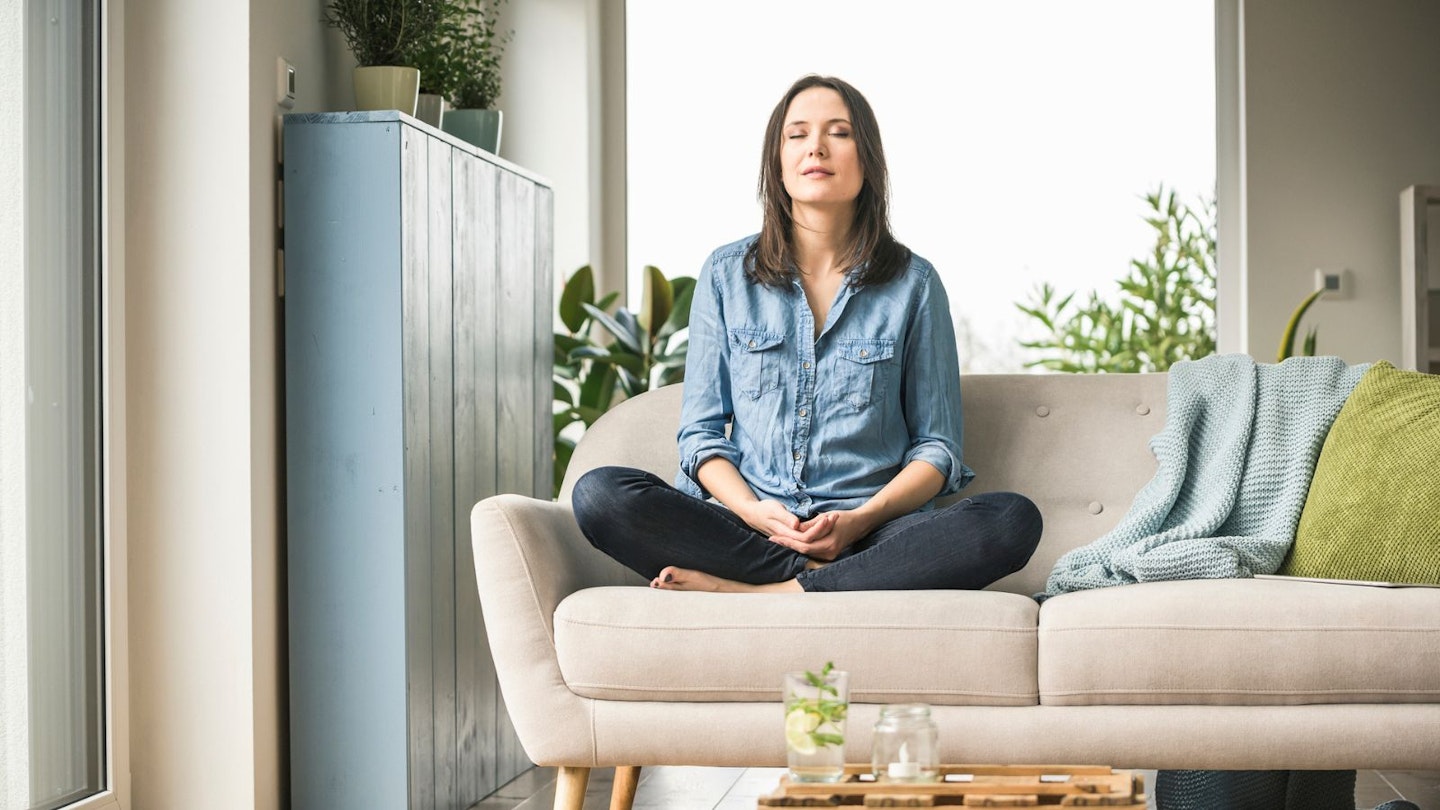
Is it okay to meditate laying down?
If you’re a beginner with meditation, lying down is an option if it helps you feel more comfortable while you’re learning a new skill. To set yourself up, lie on your back with your legs about hip-width apart, toes relaxed out to the side, arms extended alongside your body, and palms turned up.
How do you know if you're meditating properly?
If you’re new to meditation, you may be worried that you’re not doing it correctly and won’t reap the benefits of meditation. One of the first signs that you’re doing it right is a sense of heightened awareness. You’re more aware of your surroundings, your own thoughts and feelings. You may notice things you’ve never noticed before.
Types of meditation
There are many different types of meditation. These include mindfulness meditation, mantra meditation, nature-inspired meditation, ‘do nothing’ meditation, and transcendental meditation. You might choose the meditation, based on what you’re hoping the meditation will help you achieve – a loving relationship for example.
Walking meditation is perfect for beginners and it can easily be integrated into your day. Here's how to do it.
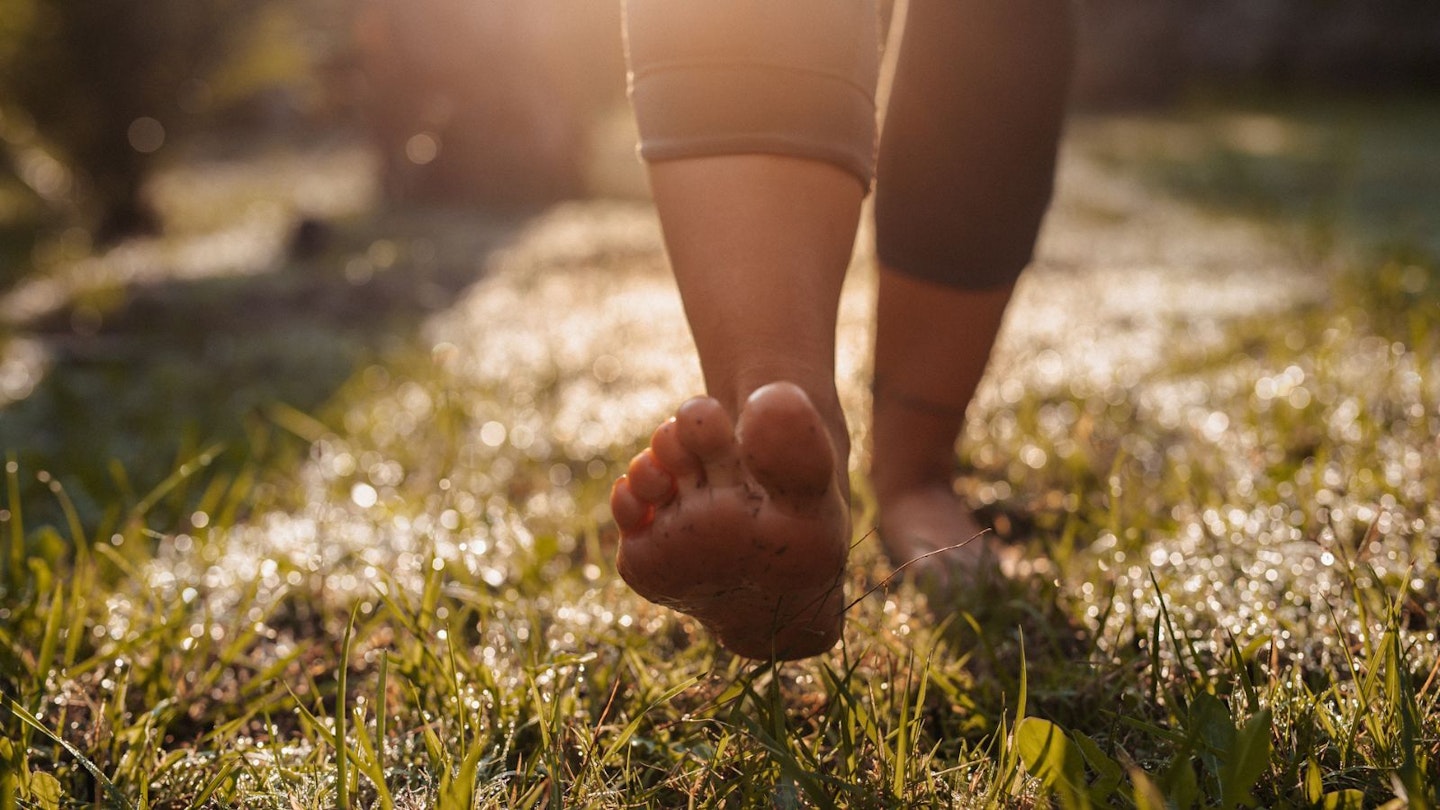
As you begin, walk at a natural pace. Place your hands wherever comfortable: on your belly, behind your back, or at your sides. If you find it useful, you can count steps up to 10, and then start back at one again. If you’re in a small space, as you reach 10, pause, and with intention, choose a moment to turn around. With each step, pay attention to the lifting and falling of your foot. Notice movement in your legs and the rest of your body. Notice any shifting of your body from side to side. Whatever else captures your attention, come back to the sensation of walking.
Your mind will wander, so without frustration, guide it back again as many times as you need. Particularly outdoors, maintain a larger sense of the environment around you, taking it all in, staying safe and aware.
